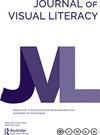The impact of theory of mind barriers in interpreting illustrations used in primary school early readers: four brief case studies of false-belief scenarios
Q1 Arts and Humanities
引用次数: 0
Abstract
Abstract Theory of mind skills are critical to understanding and interpreting many illustrations in primary school literature especially those which are used in material for the purpose of learning to read. Unfortunately, children who learn to read at an early age as well as mainstreamed children, such as those with autism, often have grave deficiencies in theory of mind skills which is necessary in order to understand first- and second-order perspective narratives. Thirty-one early readers were analysed for first- and second-order perspectives as well as for the possibility of first- and second-order false-belief scenarios. Results showed that there is a high probability that children will be confronted with early readers that require complex theory of mind skills for comprehension. In addition, four early readers were examined in more detail in case studies to see how the relationship of text to illustrations as well as the composition of the illustrations themselves either aided comprehension or increased the possibility of false belief scenarios. Finally, various tools for increasing visual literacy in regards to illustrations were discussed, such as the use of prolongation, speech bubbles, close-ups and text enhancement.心理理论障碍对小学早期读者插图解释的影响:错误信念情境的四个简短案例研究
摘要心理技能理论对于理解和解释小学文学中的许多插图至关重要,尤其是那些用于学习阅读的材料中的插图。不幸的是,在很小的时候就学会阅读的儿童以及被主流化的儿童,如自闭症儿童,往往在理解第一和第二视角叙事所必需的心理技能理论方面存在严重缺陷。对31名早期读者进行了一阶和二阶视角分析,以及一阶和两阶错误信念场景的可能性分析。研究结果表明,孩子们很有可能会遇到需要复杂的心理技能理论才能理解的早期读者。此外,在案例研究中,对四位早期读者进行了更详细的检查,以了解文本与插图的关系以及插图本身的构成如何帮助理解或增加错误信念场景的可能性。最后,讨论了提高插图视觉素养的各种工具,如延长、语音气泡、特写和文本增强的使用。
本文章由计算机程序翻译,如有差异,请以英文原文为准。
求助全文
约1分钟内获得全文
求助全文
来源期刊

Journal of Visual Literacy
Arts and Humanities-Visual Arts and Performing Arts
CiteScore
1.30
自引率
0.00%
发文量
12
 求助内容:
求助内容: 应助结果提醒方式:
应助结果提醒方式:


